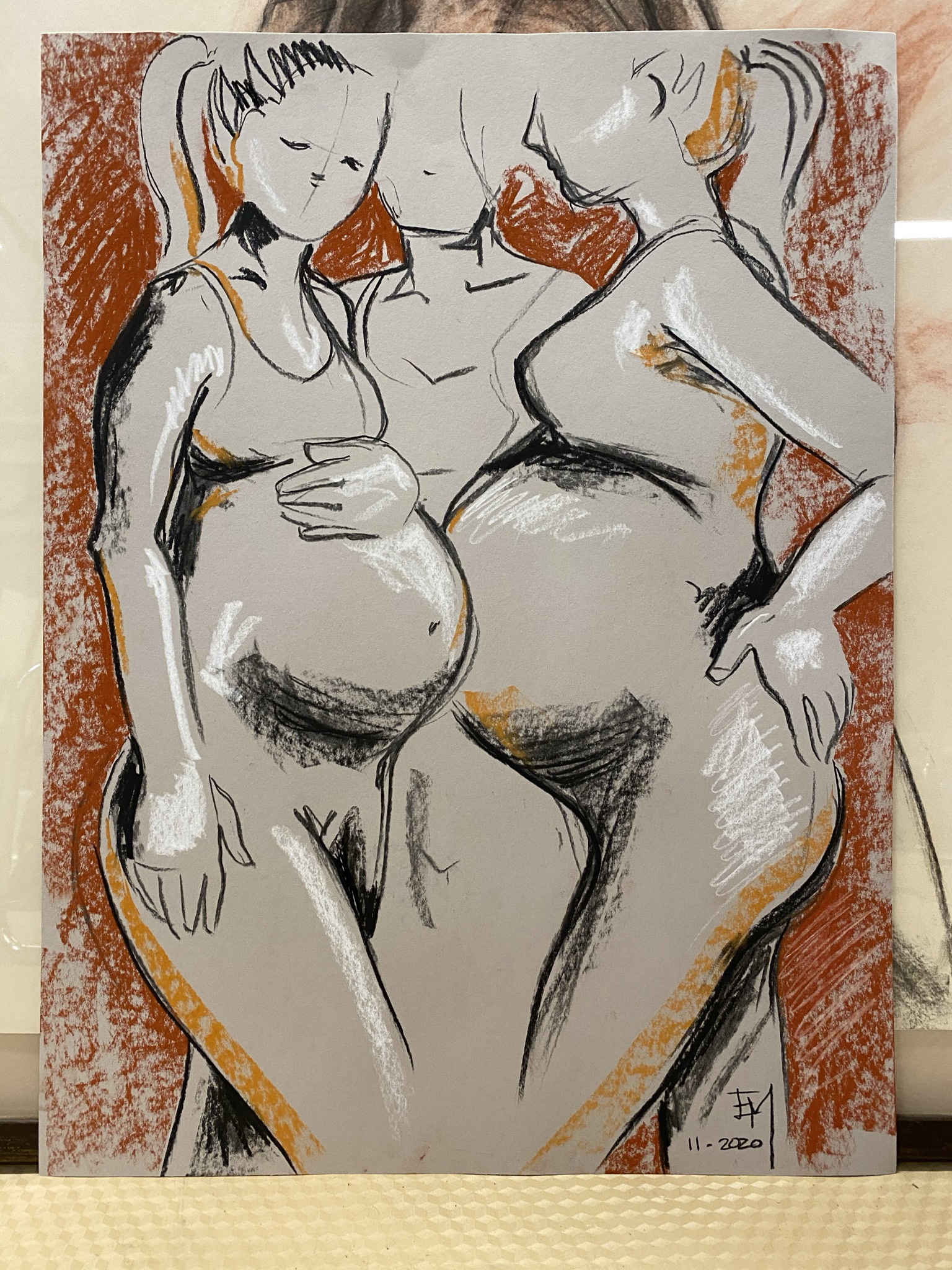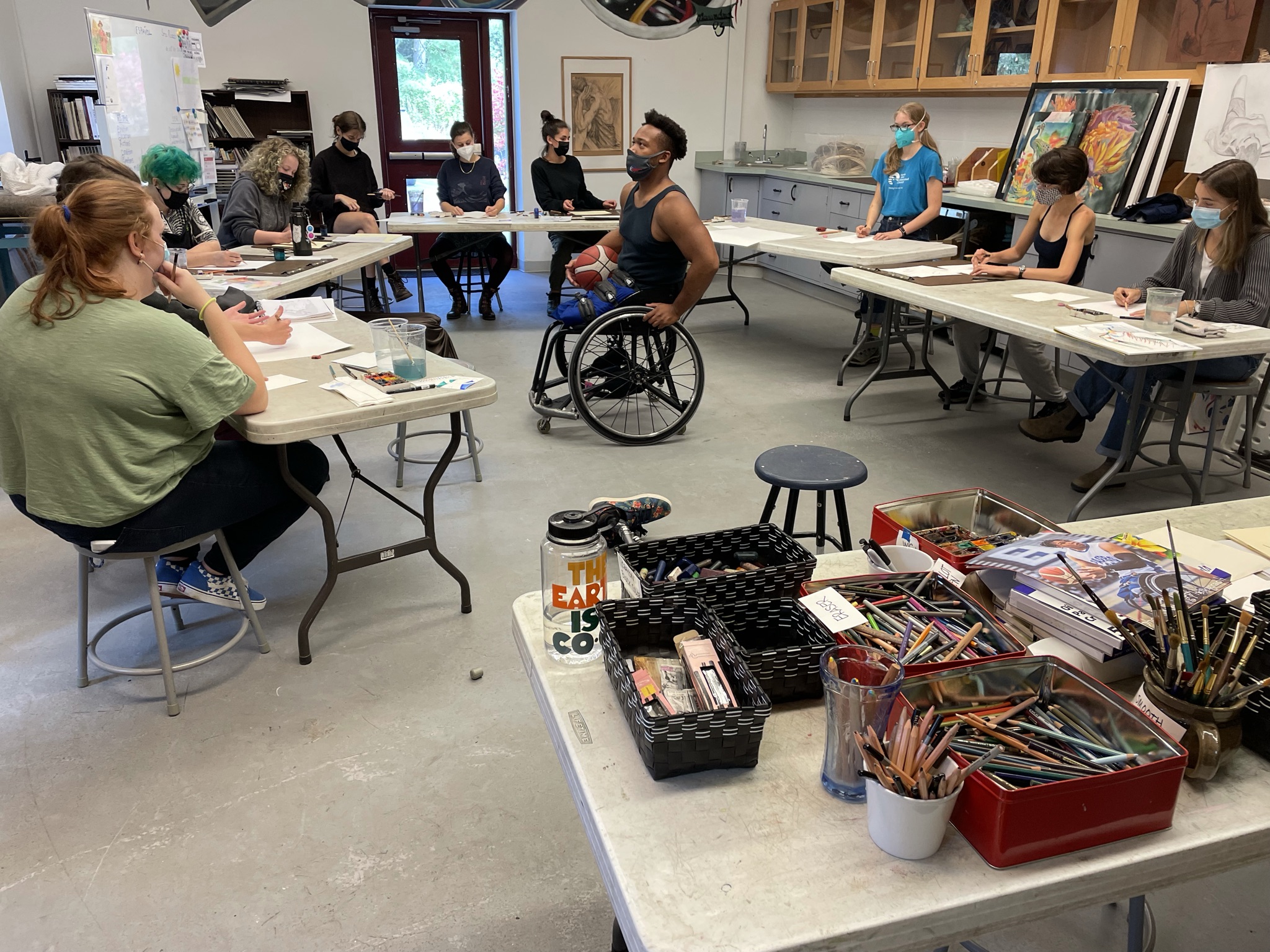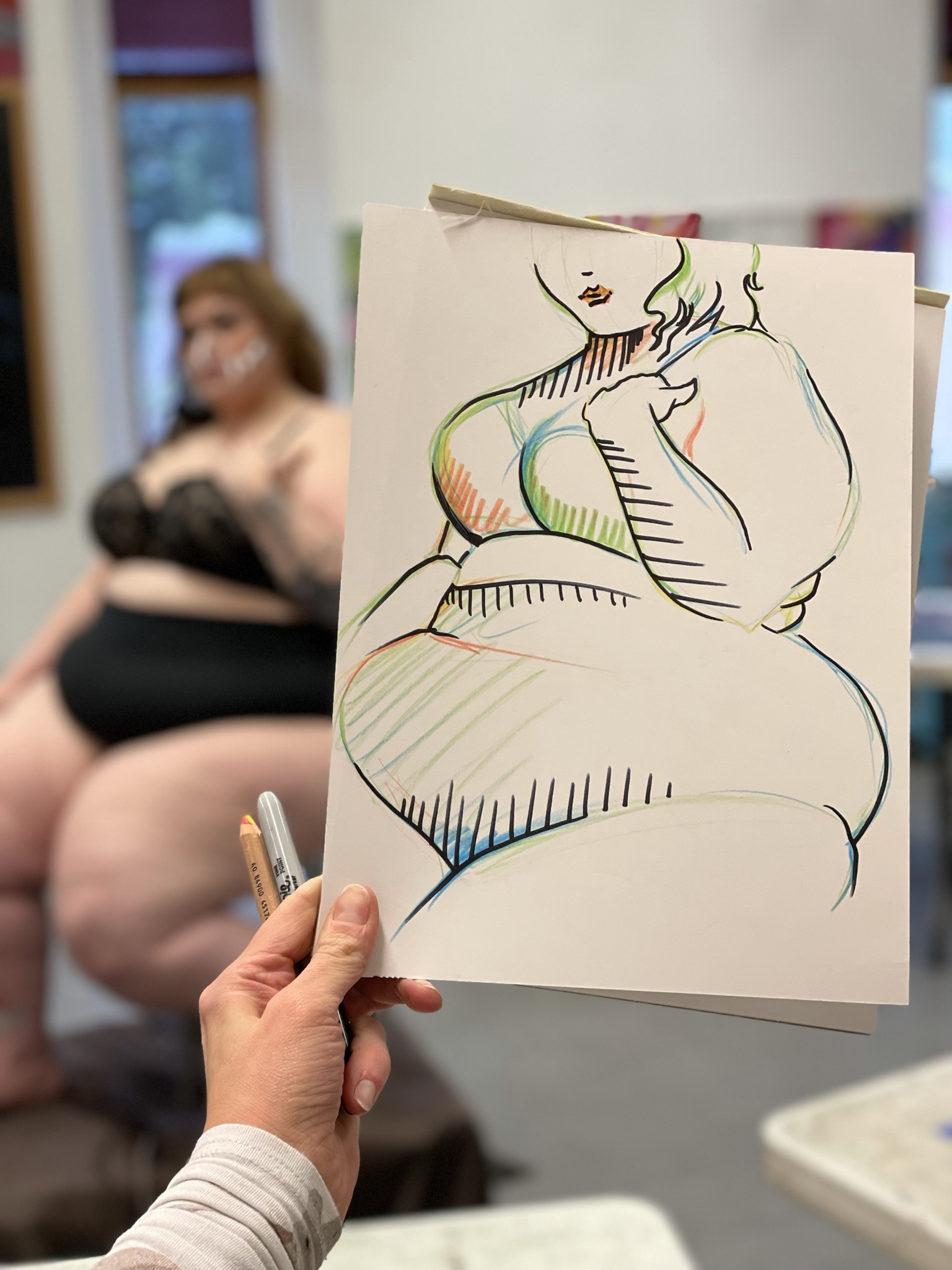

More Than a Body: Capturing the Essence of Another Human
When Elizaveta McFall (HS Art faculty, parent & HS Alum ‘04) began teaching the HS figure-drawing class over four years ago, she
Elizaveta saw an opportunity to re-imagine the approach to this tradition by establishing a dialogue and relationship with the models themselves. She wanted her students to fall in love with people and to see them as art. From her perspective, it is easy to learn the proportions of the human body, but the real work is to capture the model as they are.
She wanted her students to fall in love with people and to see them as art.
In the past, only one model would visit the classroom over a period of several weeks. Now there was an opportunity to open that experience up by inviting multiple models to pose on different days, giving the students a chance to see a variety of human bodies. Her models have evolved from “accepted” male and female body-types to now include a variety of bodies, sizes, gender, and age. This year, she invited a professional wheelchair basketball player who entered the class on his prosthetic legs, talked with the class, then removed his legs and posed for the students in his athletic wheelchair.
Elizaveta wanted to integrate social-emotional learning into the students experience by establishing a relationship with the models during their session. She creates an environment for the models and students to have a conversation. Before the model visits, the students talk about how the model might feel when they arrive - vulnerable, uncomfortable, or nervous. She asks students how do we make them comfortable? Should we giggle (even if it’s not about the model)? Should we ask questions and what kinds of questions? She prepares them to think about “nude” as a genre in art and to look at the model as nude - not naked. Students work through how those terms make them feel.
Before the model visits, the students talk about how the model might feel when they arrive - vulnerable, uncomfortable, or nervous.
Through earlier conversations with the models, Elizaveta learns about their lives, hobbies, jobs or interests. She asks them to think about the shape of their bodies and learns what they are comfortable talking about. This information is then integrated into her class, so she can model the conversation for students, who then begin to pick-up on her approach.

Once the model is back in the room, a comfortable rapport builds as Elizaveta demonstrates for students the questions to ask the models. Nikki, a plus-sized model, is asked about her journey of loving her curvy body. Elizaveta asks the students, “Does Nikki want large paper or small? Do we use straight lines or curved? Where is she most narrow or where is she most broad? What ways can we capture Nikki’s curves?”. It becomes clear that their bodies are aspects of who they are. A trans male model is not introduced by this title but through Elizaveta’s questions, they reveal a favorite part of their transformed body. The conversation with Zeus, a professional wheelchair athlete, reveals how he functions in the sport and how he uses his prosthetics to walk. A pregnant model talks about the temporary body she wears, where she gained weight and the purpose of those changes for the baby.

For students, seeing a body like their own or talking with a trans person or someone with a disability who have fully fallen in love with themselves can be a very powerful experience. Student interests are diverse - from the hard sciences, computers, history, or fine arts - but every high school senior participates in the figure drawing class and is given the opportunity to appreciate the beauty in the diversity of human bodies and interact with the amazing people who inhabit them. Elizaveta knew this new approach would be a unique experience, and the greater impact it would have on our students social-emotional skills and opportunities for growth beyond artistic abilities.
For students, seeing a body like their own or talking with a trans person or someone with a disability who have fully fallen in love with themselves can be a very powerful experience.
